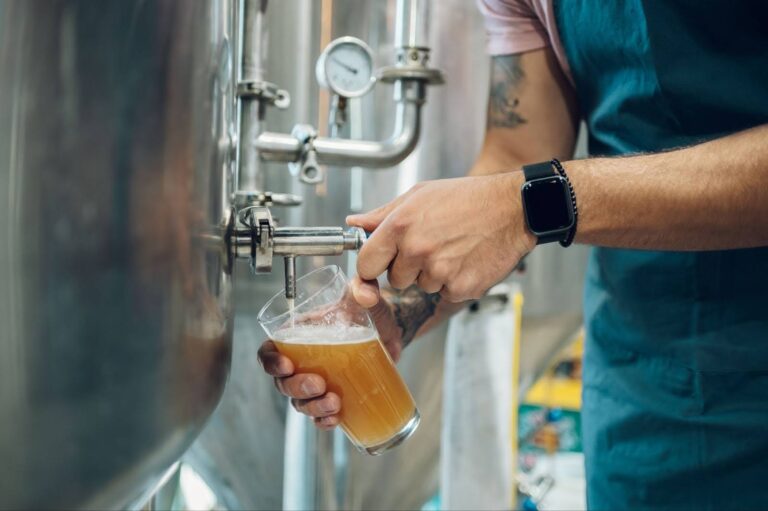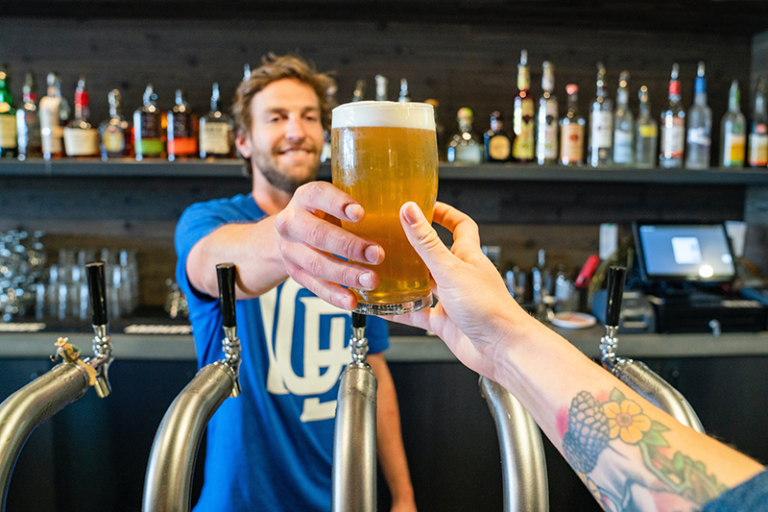5 Brewery Metrics You Should Be Tracking
Ever wonder what sets the best breweries apart from the rest? How do they manage to thrive and pour success into every pint they serve? What makes them BrewNique?
Well, the answer lies in their keen eye for numbers and the powerful insights they gain from tracking crucial brewery metrics.
Numbers may sound boring, but they help you make informed decisions when it comes to your business that can boost your success significantly!
So, are you ready to unlock the secrets behind their success?
Let’s have a look at five essential brewery metrics that will revolutionize the way you brew, sell, and conquer the hearts of beer enthusiasts!
Gross margin /profit margin
Understanding the true profitability of each pint of beer sold is a crucial aspect of running a successful brewery. How much are you making from every delicious brew?
This is where tracking your gross margin and profit margin comes into play. These essential metrics provide valuable insights into the financial health of your brewery by considering the costs directly associated with production.
First up we’ll be looking at gross margin. Gross margin measures the difference between the revenue generated from beer sales and the cost of goods sold (COGS).
It reveals the amount of profit you’re making per unit, allowing you to assess the effectiveness of your pricing strategy and identify opportunities for optimizing your product mix.
By tracking your gross margin, you can determine which products or batches are yielding the highest profitability and make informed decisions to enhance your pricing and maximize your overall profit.
Your business’ profit margin is similar; however, it takes into account other operating expenses, such as labor costs, overhead, and marketing expenses.
Monitoring your profit margin helps you understand the true earnings your brewery generates after considering all expenses, i.e. the money you can put into your pocket at the end of the day. It enables you to identify areas where you can improve efficiency, reduce costs, or allocate resources more effectively to boost your bottom line.
Labor efficiency ratio (LER)
Tracking the Labor Efficiency Ratio (LER) to Pre-Labor Gross Margin (Revenue less food/beverage costs) focuses on a different aspect of your brewery business – productivity and profitability. It quantifies the value your employees generate relative to their wages, providing insights into their effectiveness.
In short, this LER metric calculates how much margin your brewery makes for every dollar spent on employee wages. For example, an LER of 2 means that each dollar paid to an employee generates $2 in margin for your brewery.
While revenue per employee is also commonly tracked, we prefer the LER because it considers profitability, not just top-line revenue. It helps you assess workforce efficiency and optimize productivity.
Monitoring the LER empowers you to recognize which of your employees are working to their maximum potential, implement targeted training programs, and enhance overall operational efficiency.
Basically, the better your business runs, and the more efficiently you use the resources you have available, the higher your LER. Continuously evaluating the LER of your brewery allows you to identify trends, address performance dips, and capitalize on improvement opportunities.
Inventory turnover ratio
If you want to keep your brewery crafting top-level beers efficiently, then you have to manage your inventory!
The Inventory Turnover Ratio (ITR) measures how quickly your inventory is sold and replenished, providing insights into inventory management and financial performance.
Calculating your ITR is relatively simple: just divide the cost of goods sold (COGS) by the average inventory value during a specific period, and voila!
A lower ratio indicates efficient inventory management and a healthy cash flow, while a higher ratio may suggest overstocking or slow-moving products. Understanding this ratio is key to understanding cash flow requirements to keep expanding your breweries production.
So how can you improve your Inventory Turnover Ratio?
First of all, you can consider optimizing inventory practices, analyzing purchasing strategies, and adopting just-in-time inventory techniques. Utilize data-driven forecasting and demand planning to align inventory with customer demand, and make sure to regularly review and adjust your product mix based on market trends. After all, you don’t want to run out of your best seller right at the beginning of the trend!
By monitoring your Inventory Turnover Ratio, you can make informed decisions about purchasing, production, and inventory levels. Striking a balance between stockouts and excess inventory will maximize profitability. Ergo, more money for your business!
Facility costs as a percentage of revenue
When running your brewery, you have to be aware of how much your facility itself is costing you.
Monitoring the proportion of revenue allocated to facility expenses can help you assess operational efficiency and growth potential.
As your brewery becomes more efficient and grows, it’s important to be mindful of facility costs.
Outgrowing your current facility can impact profitability and hinder expansion. By monitoring facility costs as a percentage of revenue, you can identify signs of potential constraints and decide whether you’re okay as you are, or if you need to up or downsize.
To optimize facility costs, you should analyze expenses regularly, explore energy-saving initiatives, and evaluate lease or ownership options.
Here’s a little checklist you can follow to make sure the facility which holds your brewery is running at its best potential:
- Use all the space available efficiently. Think to yourself: “Is everything where it should be?”
- Keep your processes, both administrative and manufacturing, in check. Are you using the most up-to-date systems and services?
- Make maintenance your utmost priority. There’s nothing worse than profit loss because you’ve forgotten to check up on how your systems and machinery are working!
Continuously assessing and fine-tuning facility costs positions your brewery for long-term success.
Top-line revenue
When it comes to assessing the financial health of your brewery, top-line revenue plays a fundamental role. While it may sound like a basic concept, it holds significant importance in understanding your business’s sales trends and overall performance.
But what exactly is top-line revenue, and why is it crucial to examine it closely?
The top-line revenue is a gross sales number (NOT COLLECTIONS!) showing how much revenue your company brought in for a given period, not accounting for allowances or discounts, and especially does not account for any sales tax collected from customers
Instead, you need to separate discounts into their own sub-category within the revenue section of your P&L By accurately tracking and categorizing discounts, you can better evaluate the effectiveness of promotional strategies and their impact on revenue, and see a truer picture of your expense categories as a % of sales. (Think food, beverage, labor, etc)
Oh, and just so we are clear, revenue IS NOTcollections. “Collections” include sales tax which has nothing to do with your sales revenue and should not be on your P&L! (*Hint, it goes somewhere on your balance sheet.)
To gain a clear understanding of your brewery’s actual revenue and key metric performances you MUST record your sales at gross value and separate out discounts and allowances into separate accounts in your revenue section of your P&L
Why is getting it right so important? Because inaccuracies in calculating top-line revenue can lead to skewed financial reports and skewed metrics/KPIs, which can then lead to misinformed decision-making.
Employ robust accounting practices, processes and integrations to make sure accuracy is maintained. And, remember, if this all sounds too complex or time-consuming, then why not reach out to an expert accountant such as us to do it all for you?
Need help with metric tracking?
We understand that metric tracking is not the most simple or engaging task that comes with running a successful brewery. Despite this, it is incredibly important to your success that these are monitored and used for optimizing your business.
Speaking with an expert accountant can assist in setting up tracking metrics, software, and all the other intricacies that come with the task.
And that’s exactly what we’re here for!
Get in touch with us today, and we can set you on the right path for driving your brewery’s future.
Bottoms up!



